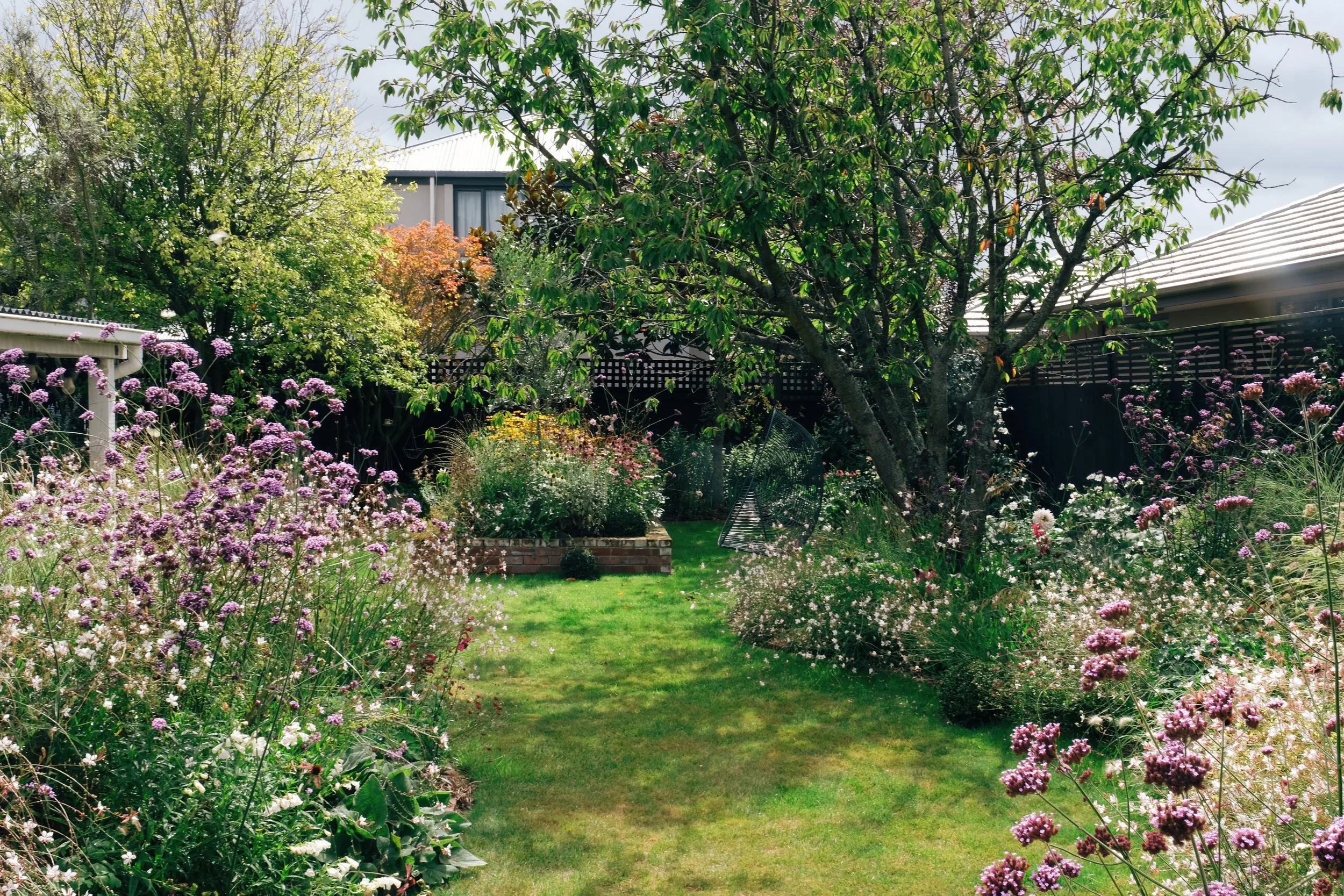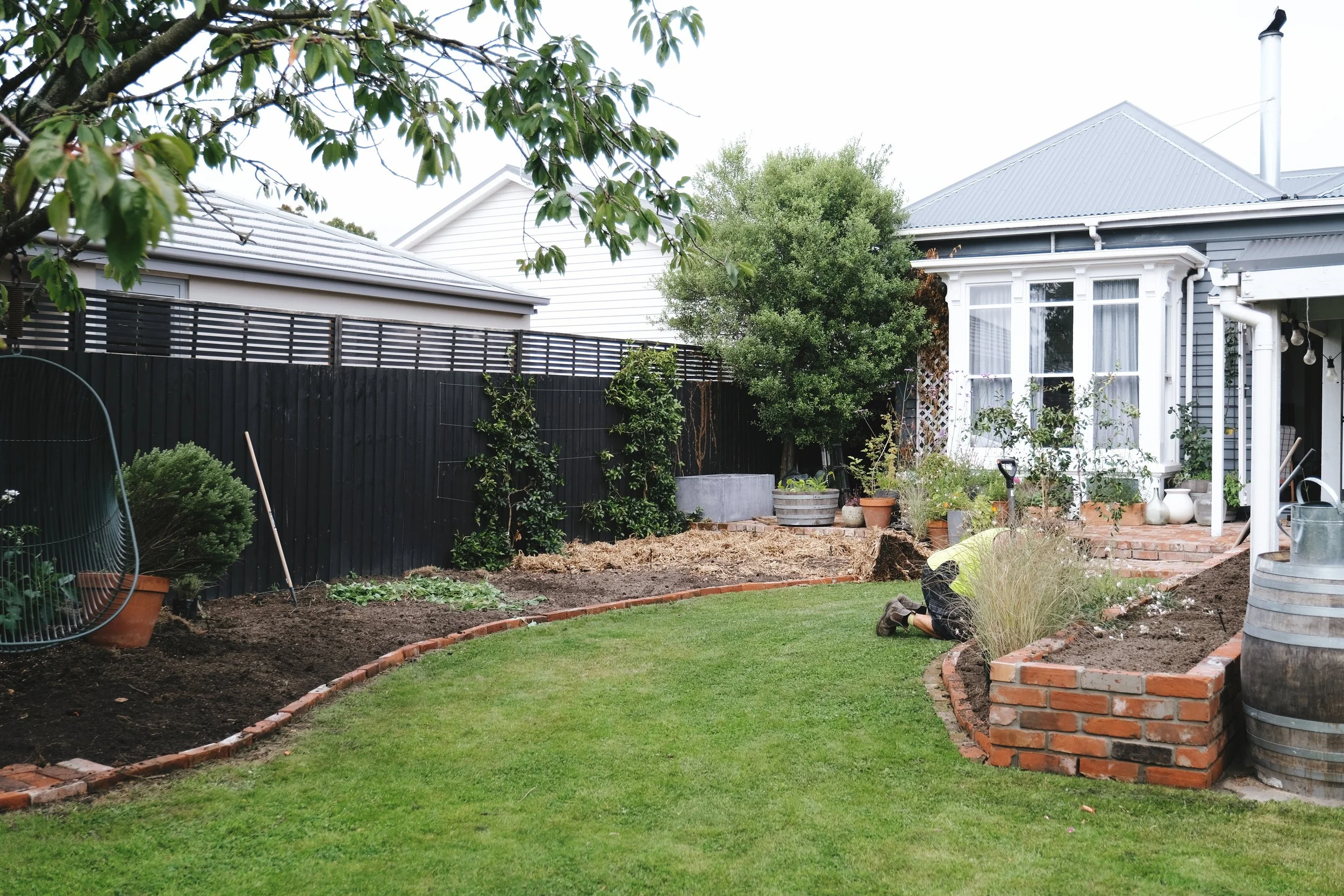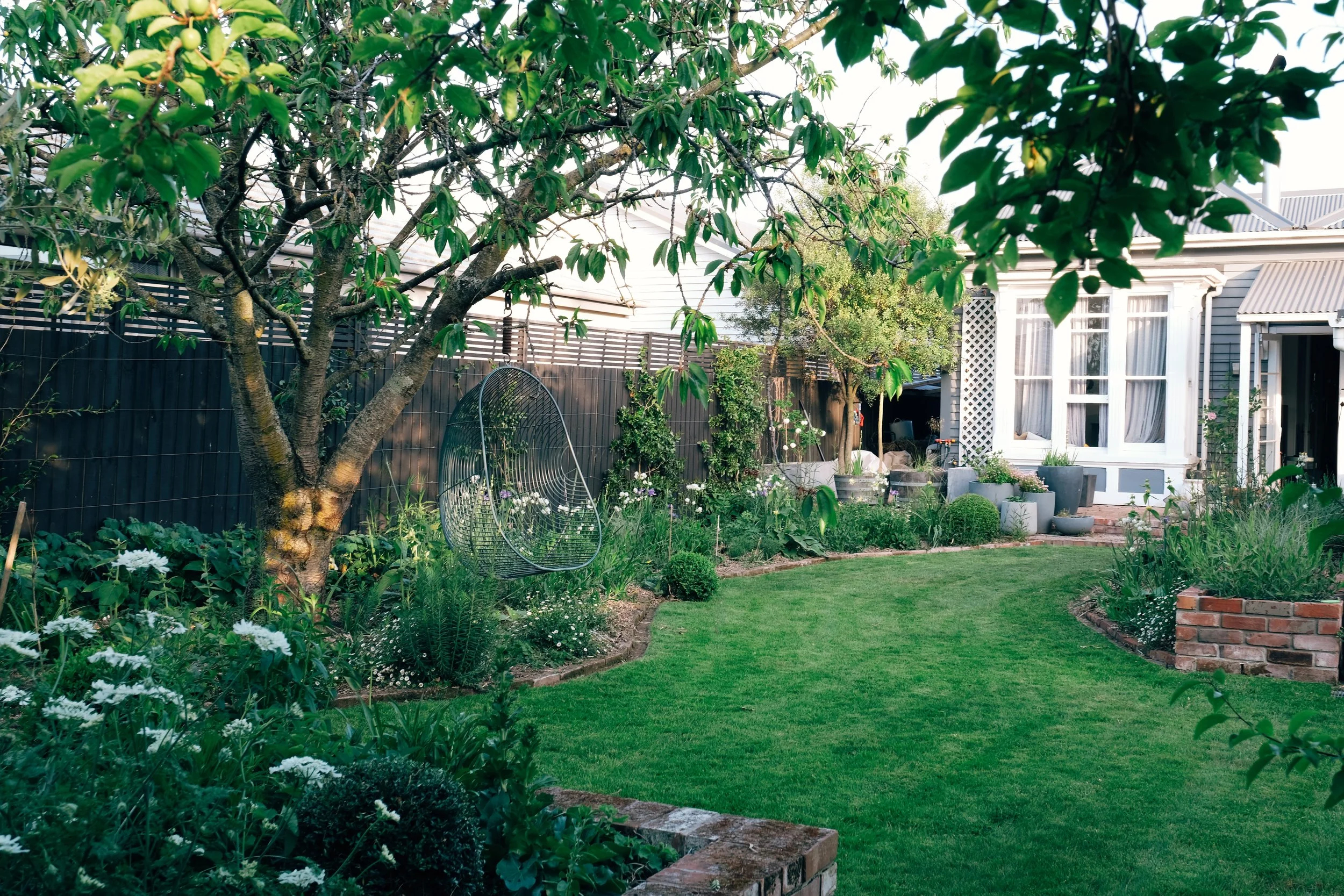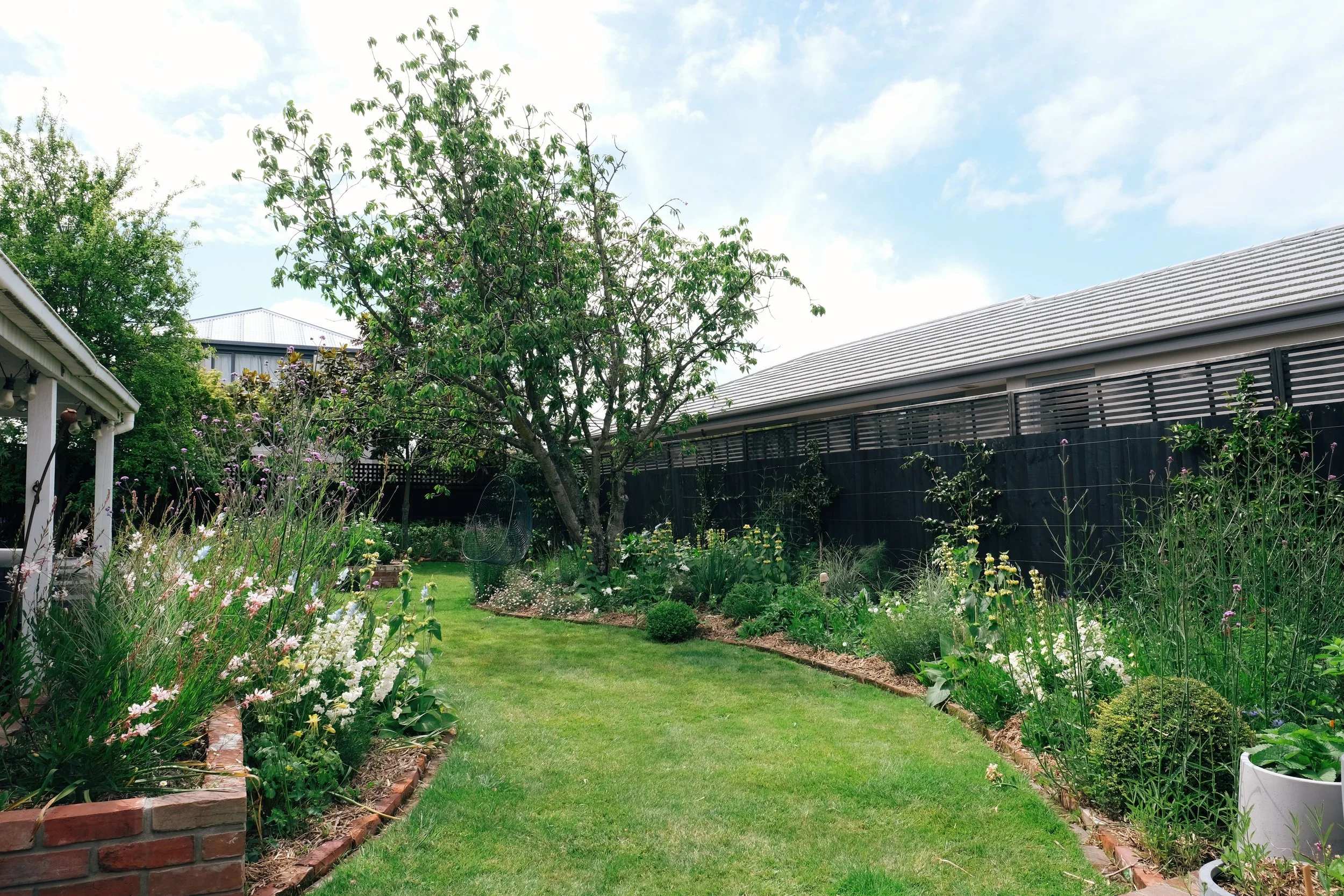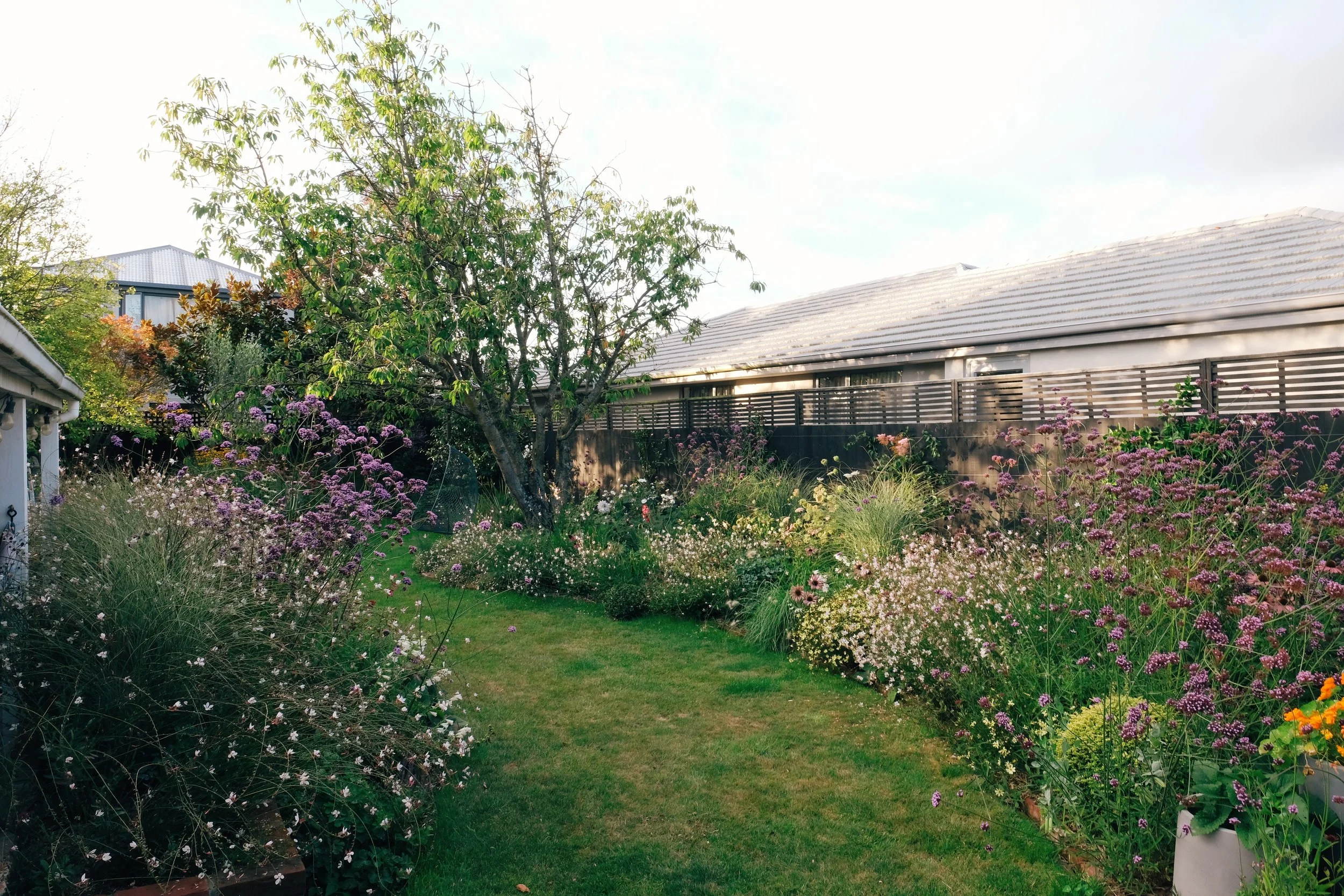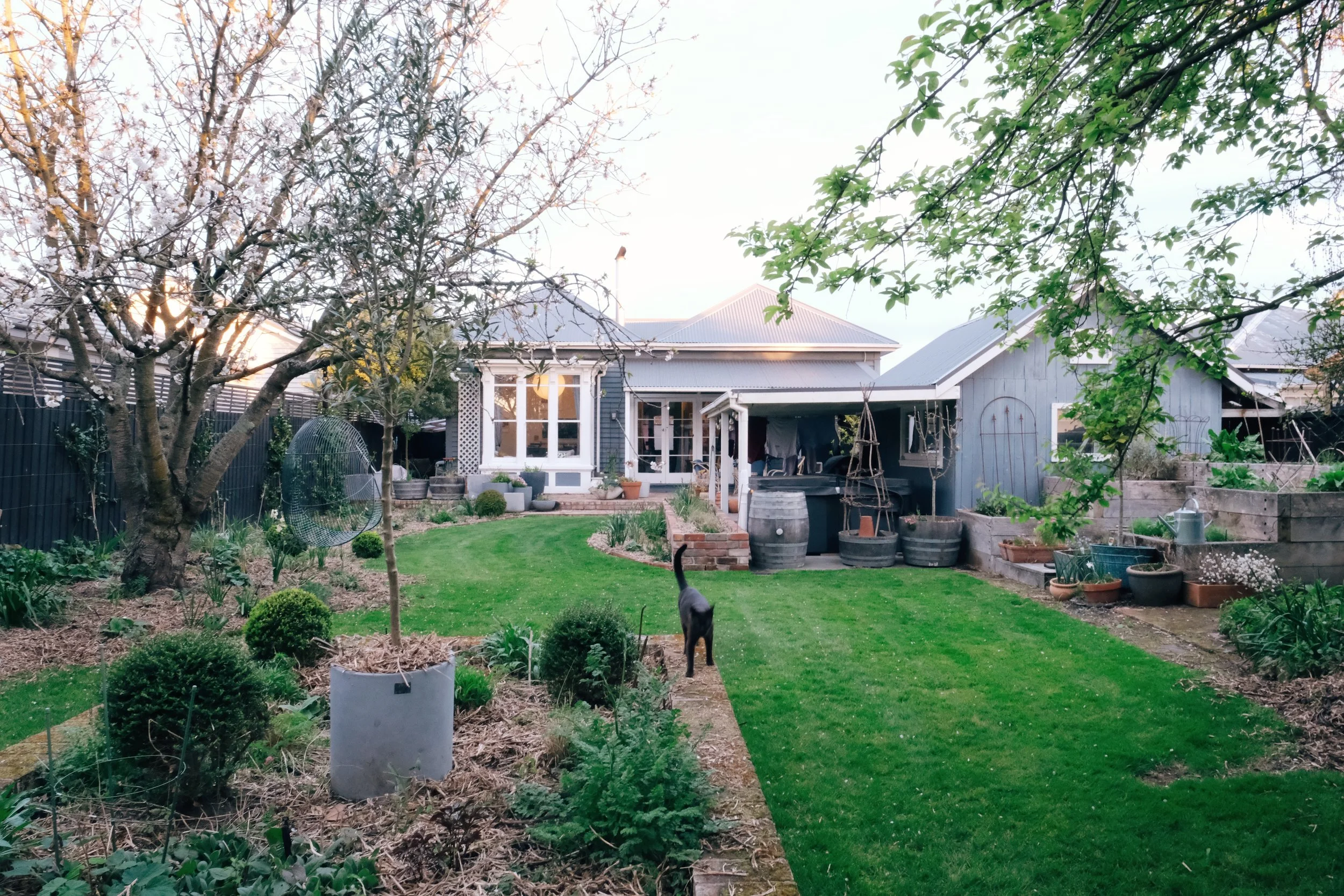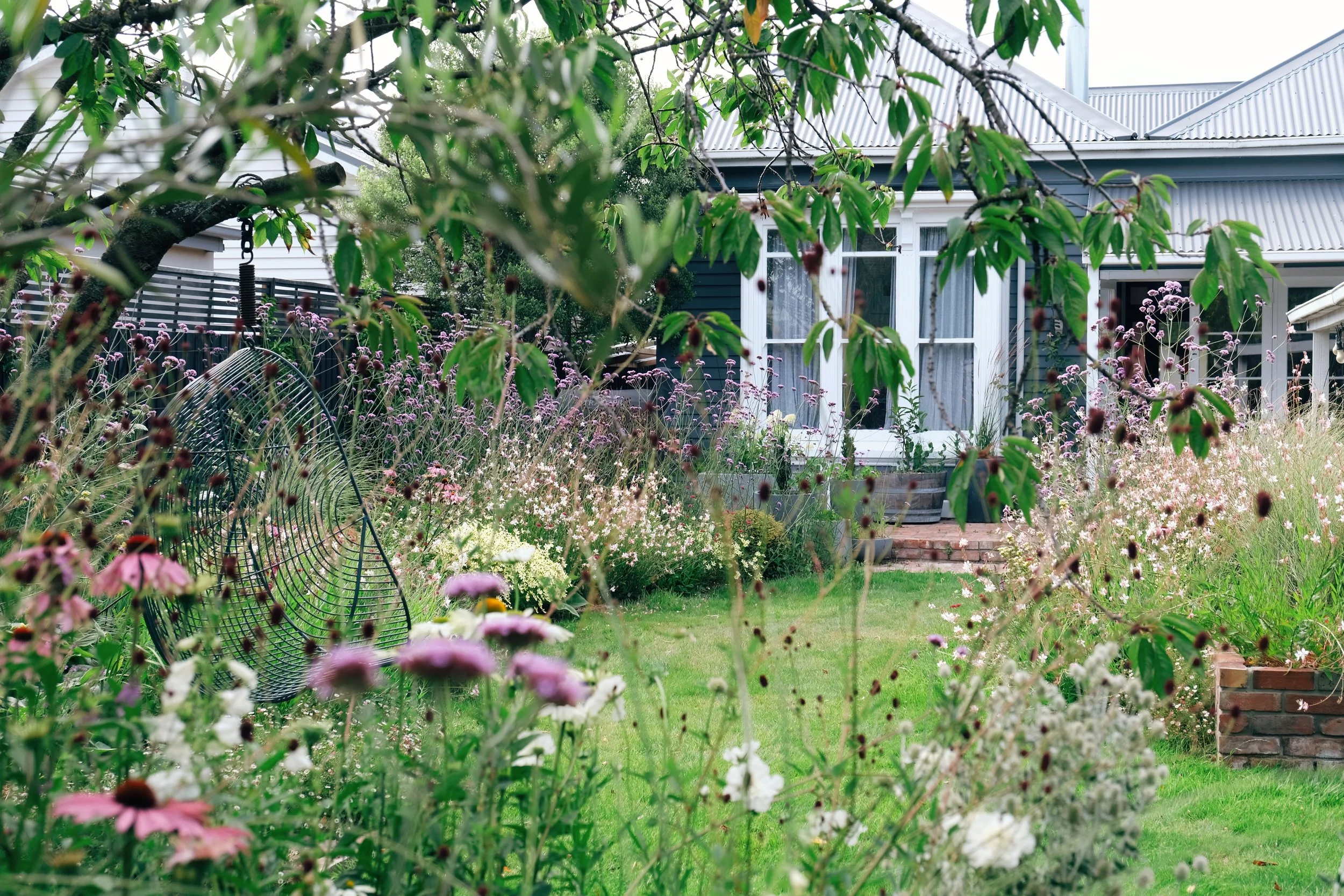A Garden in Progress - Part Three
/My new garden beds took to summer with a vigour I had only dreamed of, and now, with the cooler nights arriving I am noticing the beginning of the soft fade. The strong echinacea cones are taking precedence over their tiring sun-soaked petals and after multiple rounds of flowering, my white veronica has succumbed to its annual dose of powdery mildew.
But thanks to my endless learning curve and constant research there is much to still look forward to. The lovely navy spikes of Salvia nemorosa are charging up for another round after a mid-summer cut back and I am checking daily for evidence of flowers emerging on my Miscanthus sinensis ‘Morning Light’.
Over the last few years, I have finally caught hold of the beauty in the autumn straggle and decline, appreciating that this is yet another aesthetic phase of the naturalistic style planting that I have attempted to adopt.
I am still quite blown away by the fullness and maturity these beds have found in just their first growing season. As I approach the 12-month anniversary of cutting down trees, reclaiming lawn and creating the new raised bed, I marvel at the fact these healthy large plants were only dotted into the ground a year ago. If anything, this has been homegrown proof of the pleasure and power to be found in mixed perennial and grass planting. And for my peers, quite used to instant gratification, I can say this has not remotely tested my patience.
As I have covered before, with two previous updates in March and December last year, it has been an absolute wonder and revelation for this newish gardener to witness the real-world outcomes of a garden mapped out in coloured pencil and powered by plenty of learning.
lATE SUMMER 2023
NOTABLE SUCCESSES
The introduction of so much gaura into the planting has been a rolling road of discovery. In spring I shared that the plants in the raised bed were performing well, while the ones in the ground were splitting at the base under the weight of their long limbs. On research, I realised that gaura’s preference of free draining soil may have been the issue and after the long wet winter and spring combined with my clay soil, the main beds were perhaps not a suitable spot. In response, I pulled out a few plants (which I can hardly tell now!) and brutally pruned back the limbs of the others by about two-thirds.
The results have been excellent, with all the gaura coping well with low water in the dry Canterbury months of January and February and the pruned back plants sporting an abundance of fine and upright flowering stems. This has been a great lesson learned in real-time and while I’m not going to replace the whole crop as I had previously thought, I still plan on reducing the planting a little and providing the remaining ones with some more space to avoid the smothering of their neighbours.
eARLY aUTUMN 2022
mID sPRING 2022
lATE sUMMER 2023
Another success has been my planned shift in colourway between the spring and summer show. The fresh green of the bolstering clumps of summer flowering perennials were well accompanied by the yellows, blues and whites of the spring blooms I had selected, just as I had hoped. My plan for a richer palette of purples, pinks, crimsons and blues for summer was overall a success however I have ended up with a little more white than I had preferred.
Highlights of the summer show have been the gorgeous dots of Knautia macedonica, and yet again the soft feathery effect of the miscanthus. The large heads of echinacea have visually stopped everything simply floating away!
eCHINACEA AND THEIR BIGGEST FANS!
LOOKING FORWARD
While planting last autumn, I deliberated for ages over each specimen's density, spacing and pairing. Desperate for as few gaps as possible I painstakingly researched mature heights and spans of the plants I was popping in, and it’s safe to say, that I may have pushed the envelope of snugness a little too much in places.
With their summer strength dissipating, it’s fair to say there is a lot of flop and drunken lean occurring and many of the more delicate specimens are yelling for help from under their towering neighbours.
But seeing the garden’s state now has given me a great opportunity to take stock and I am noting the changes I want to make with a little bit of plant ‘jigsawing’ in a month or two.
As mentioned, some of the gaura will come out and to address the dominance of white I plan on replacing my Penstemon ‘ Snow Storm ‘ with the crimson Penstemon ‘Garnet’ that I’ve been testing. I’m also planning to increase my use of Salvia nemorosa ‘Carradonna’ and double up on my clumps of echinacea.
The overwhelming softness of the beds feels like they need some more vertical punctuation and I plan to aid this with the addition of early flowering, tall upright grass Calamagrostis x acutiflora ‘Karl Foerster’ with its honey-coloured tops.
mID SPRING 2022
mid sUMMER 2023
I now await the next phase of these beds to reveal itself over the coming autumn and early winter. Will it look entirely messy, or will I find the crispy sculptural result of the flowering grasses and perennial seed heads as pleasing as I hoped?
What an adventure this is.
eARLY aUTUMNM 2022
lATE wINTER/eARLY sPRING 2022
lATE sPRING 2022
mID sUMMER 2023
This is an expanded version of the article featured in my Stuff ‘Homed’ gardening column also republished in The Press, Dominion Post and other regional papers on March 16th 2023.
All words and images are my own, taken in my home and garden in Christchurch, New Zealand unless otherwise captioned.


